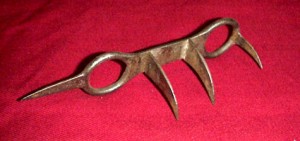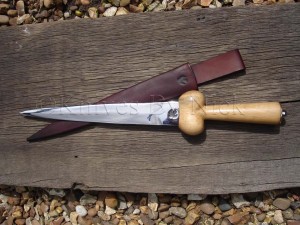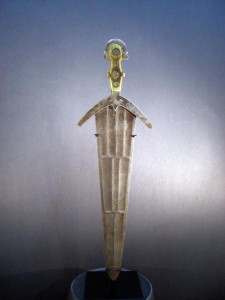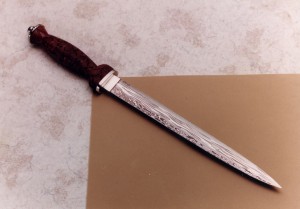Ah, the dagger, one of the world’s most longstanding weapons. Whether you’re stabbing Caesar 23 times or slicing off the ear of a Roman soldier attempting to arrest Jesus, it’s a great blade to have.
The dagger evolved from prehistoric tools made of flint, ivory or bone, and their function was as backup weapons to maces, axes and javelins.
After guns popped on to the war scene, daggers continued to be used for hand-to-hand combat or stealth killings.
During WWII, the Nazi regime was a big advocate of daggers, which they decorated ornately and wore on their uniforms to show prestige.
So what’s up with daggers today? Well, they are rarely used for murdering people, but they have become quite popular with collectors. Here are few of our favorites:
The bagh Nakh
The bagh Nakh is a very intimidating dagger to face off against in man-to-man combat. This South Asian knife fits over the knuckle and can also be concealed under the palm. It has between four or five curved bars attached to a crossbar or glove and is designed to rip through skin and muscle.
The Bollock Dagger
Possibly the manliest of daggers, the bollock dagger has two oval swellings at the tip of its shaft resembling the male genitalia. This dagger was popular in England and Scotland between the 13th and 18th centuries and was commonly carried by outlaws and raiders.
The Cinquedea
The cinqueda is a long dagger that was developed in Northern Italy and enjoyed a period of popularity during the Renaissance. Cinqueda means “five fingers,” which refers to the width of the blade adjacent to the guard. The cinqueda was mostly used as a thrusting weapon and was carried horizontally next to the buttocks so that it could be drawn laterally from the back.
Scottish Dirks
A Scottish dirk is a longish dagger worn as part of full Highland dress for formal occasions. The blades of Scottish dirks measure 12 inches and are lavishly decorated with silver mounts, pommels and cairngorn stones. Unlike most daggers, Scottish dirks are single-edged and often have decorative art work on the unsharpened edge of the blade.
Jambiyas
Jambiya is an Arabic term for short daggers that are usually worn on a belt. The jambiya is mostly associated with Yemen, where men over 14 often wear a jambiya as a clothing accessory. The hilt (handle) of the jambiya is what often determines the price, and certain jilts, like the safani hilt made of rhinoceroses’ horns, can cost up to $1,500 per kilogram.









Leave a Reply